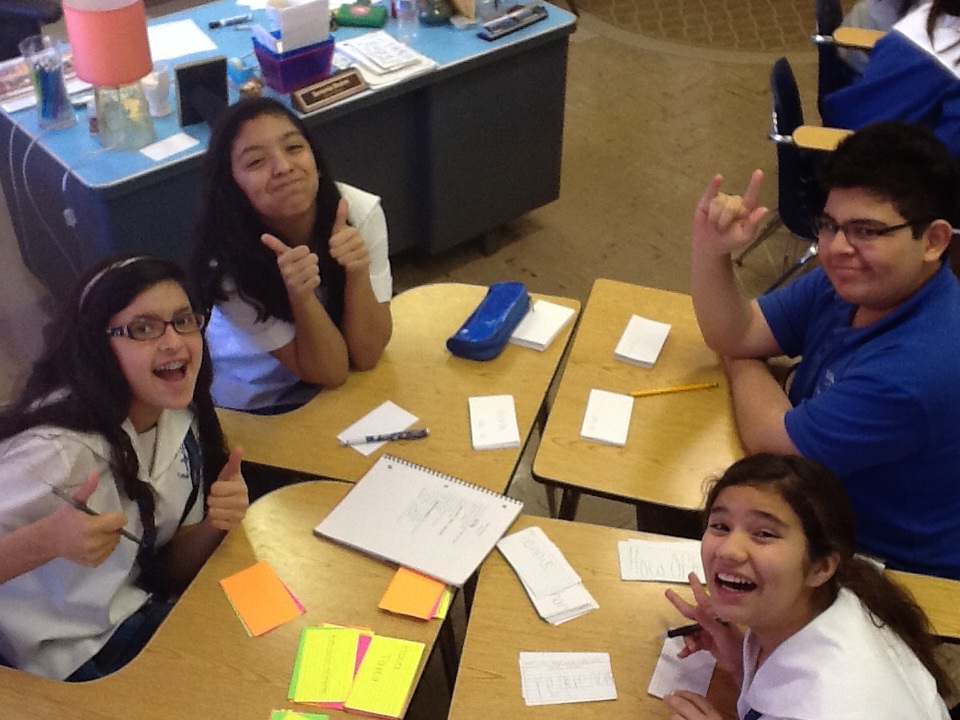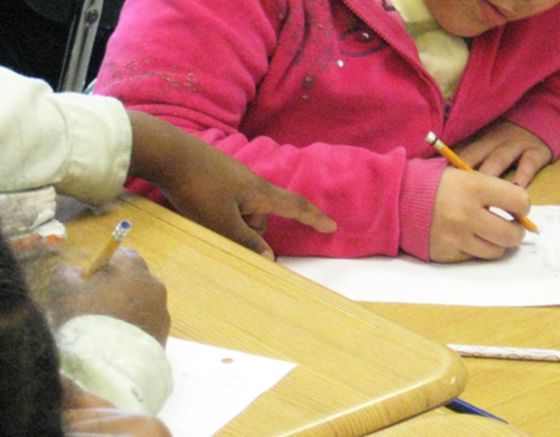While I would occasionally meet students in my middle school classroom who loved poetry, by and large my students were reluctant to embrace the genre. I dealt with this resistance in a variety of ways, including reaching into other disciplines to bring in vocabulary words for review and practice in poetic form.
Yet another challenge I managed to navigate with this assignment was the expectation that I would reinforce content area words in my English Language Arts classroom. I was able to meet this standard in a fun and engaging way by collaborating with teachers on my team to incorporate the words that were most important in their classes, while simultaneously teaching concepts of poetry.
Day One: Curating the Words
The first day of this lesson is most often the word-curation phase, and I had the opportunity to try different approaches as I taught this lesson over the course of three years. Teachers can collaborate with other ELA teachers on their grade level teams or with teachers in other departments to cull a list of the most salient words. They can also read the standards that their colleagues have to cover and draw ideas from these lesson goals. A third possible way to cull words is simply to brainstorm with students about the words that they are learning and using most often. I have used a combination of all three of these approaches. While reading my colleagues’ standards was helpful in terms of understanding the curricular demands they were meeting, a combination of collaborating with other teachers and gathering ideas from students proved to be the most engaging way of arriving at the words we want to use.
Once these words were gathered, the first day’s lesson focused on deciding the kind of topic the poem might cover. For example, I have worked with students to write break-up poems that include math words. Here is a section from a poem I modeled:
You are an irrational number,
my scatterplot ex-girlfriend.
I am afraid that our symmetry
is no longer equivalent.
This first day has also been an opportunity to explore examples of what poetry can do, including a breaking up of the preconceived notion that poems must rhyme or follow certain patterns. This lesson continues to be a wonderful way to showcase the wide variety of ways that poems have been written in the past, as well as the many paths writers take when composing poetry now.
Day Two: Crafting the Poems
On the second day of the lesson, the goal is to begin crafting the poems. Students could use math, science, history, and even health terms to create their verses, and they can interchange content areas as they needed to. My role this day is facilitator as students work first individually to pre-write and explore connections, and then form small groups to work on the poems.
My role on this day also includes making more examples of poems and poetic forms available, and this requires reaching out to my school librarian to bring a supply of books with many examples. I made these available to groups as they wanted to explore examples, and on some occasions I had cross-disciplinary team members who were willing to share textbooks from their class so that students could use these books to explore and gather more vocabulary words.
One of my favorite texts to use on this day was a recorded set of poems read by the original authors. I would sometimes play these poems during the quieter moments of class to offer inspiration, and I made the companion book available in case students wanted to see how the spoken form compared to the way the poets organized their work visually.
In any case, the second day was the chance to do the work that always has to be done when teaching writing—actually “getting in the water” and learning to swim by doing some composing.
Day Three: You are a Poet…and We Know It
The final day of the lesson was about sharing what had been drafted. Although I created poems to show at the beginning of the lesson cycle, I would often create new ones based on ideas the class had gathered. In this way, I was facilitating, but also creating new examples, and these poems acted as a kind of memento for what the class accomplished each year.
This “author chair” day gave students the opportunity to share and critique their writing, discussing how they decided to arrange the poems and why they chose to use the words as they did. Some students included a majority of words from one discipline, while others wove many content areas together. Regardless of what words each group chose, by the end of class we had all been exposed to a wide variety of terms.
What is more, discussion about vocabulary could take place, moving beyond the traditional learning cycle of: 1) find the word, 2) write the definition, 3) take a quiz, 4) move on. Conversations could occur naturally and, to be honest, creating a text like this proved to be much more engaging for the teacher, as well as the students.
Conclusions, Challenges, and Accommodations
Poetry was an area that my students sometimes studied reluctantly. In addition to this motivational challenge, I also had to decide how I would tackle the standards-based responsibility of engaging with vocabulary words outside of English Language Arts. In order to meet these expectations effectively, I used poetry as a way of incorporating new words from other classes.
This lesson could be compressed, depending on the time available, with fewer examples and shorter drafting phases, but the lesson could also be extended. The next part of my teaching usually focused on different forms of poetry, like haikus and limericks. These forms could also be incorporated into this lesson cycle.
Finally, an additional challenge resulted when other teachers did not view poetry as widely and with the kind of fluidity that I did. I embraced prose poems and blank verse in my class, while some teachers felt that poems should adhere to a rhyming structure with a certain number of syllables. Rather than treat these conversations as oppositional, I counted them as dialogical points of collaboration and discussion. After all, my goal in this lesson cycle was to share new words with students and convey appreciation for poetry—I could try to make literary converts at other times in other settings.
Photo: St. Paul Middle School
Jason DeHart is a PhD candidate in literacy studies at The University of Tennessee, Knoxville. DeHart has worked in the education profession for over a decade, and taught 8th-grade language arts at Ocoee Middle School in Cleveland, Tennessee.



